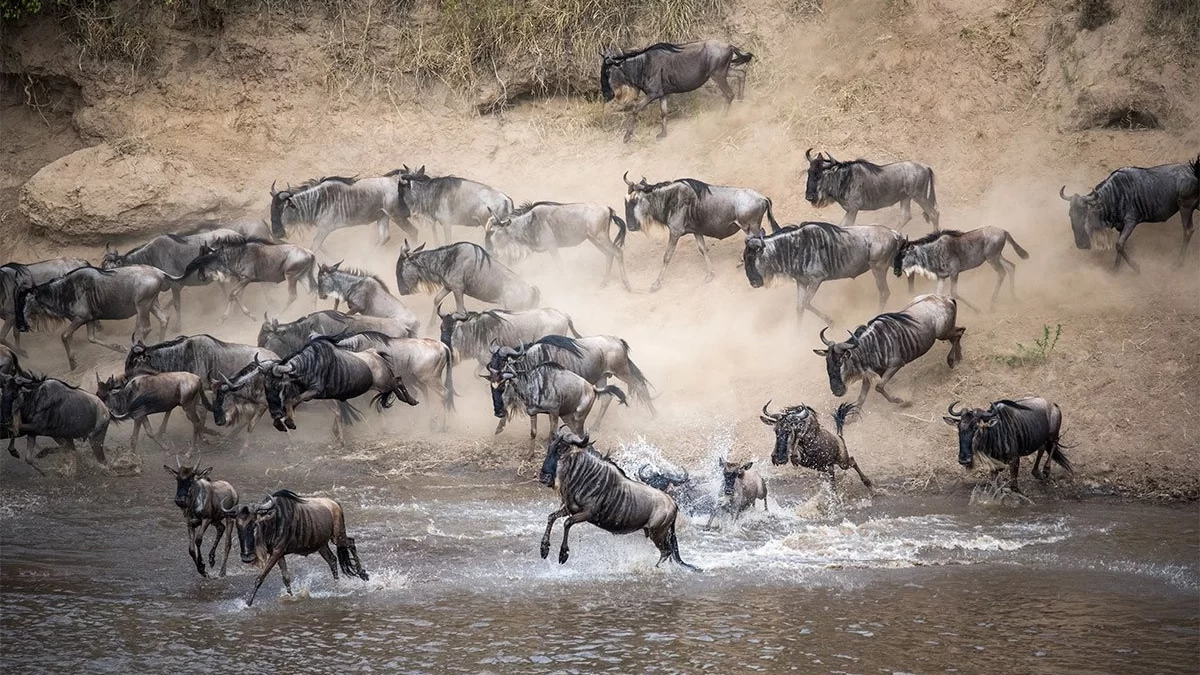Lamai Triangle in Ngorongoro, Tanzania

Matiti Plains & Twin hills in Serengeti, Tanzania
December 10, 2023
Wildlife in Serengeti National Park, Tanzania
December 10, 2023Exploring Lamai Triangle in Ngorongoro, Tanzania: Unveiling a Triangular Shaped Wonderland
Lamai Triangle in Ngorongoro, Tanzania – Once upon a time, a majestic mountain stood tall, rivaling even the nearby Mount Kilimanjaro. Its summit touched the African skies, and its vast slopes dictated their own weather patterns and water flows. All was serene with this dormant sentinel until the day the mountain awoke, and then, it fell.
With a ferocious blast, the volcano imploded, creating a caldera of immense proportions: a hundred square miles, 12 miles wide, and 2,000 feet deep. What had once claimed the continent’s highest peak was reduced to a mere impression, a shadow of its former glory.
Yet, life found a way to reclaim this geologic marvel over millions of years. Freshwater pockets formed, lush vegetation flourished, and, inevitably, wildlife made its grand entrance.
Abundant water and grass beckoned ungulates, large predators, and a myriad of bird species. Enclosed within its topography, animals descended into this bowl-shaped paradise, and once they arrived, they never left.
Lamai Triangle Ngorongoro Tanzania: Where Nature Unfolds Its Secrets
Nestled in the embrace of the Lamai Triangle, north of the Mara River, this triangular watershed area serves as the southern border, while the Masai Mara National Reserve flanks its eastern and western sides. A haven for wildebeests and zebras during the dry season, the verdant red oat grasslands mirror the beauty of the Masai Mara, punctuated by acacia trees atop rolling hills—a distinctive landscape within North Serengeti.
This hidden gem, one of East Africa’s least-explored places, remains a well-kept secret, rarely visited by the masses. Embark on an all-day safari here, and the likelihood of encountering other vehicles is minimal. Unlike other Serengeti regions, you can traverse off-beaten tracks freely, unencumbered by tracked trails.
Feel the pulse of the land on a walking safari along the Mara River banks, always accompanied by an armed park ranger for security. The dry season, from July to November, witnesses the migration scattering across this expanse, constantly in search of pastures.
Amidst this seasonal movement, the Lamai Triangle unveils one of the best places to spot the eland, Africa’s massive yet graceful antelope. Home to various resident species like buffalos, topi antelopes, elephants, warthogs, ostriches, and giraffes, this region teems with life year-round.
In 1965, the Lamai Triangle was added to the Serengeti National Park to protect the herds of wildebeests seeking refuge during the dry season. A response to intense poaching activities in the 1950s and 1960s by the Wakuria tribe nearby, this addition aimed to safeguard the natural balance of the area.
During the era of rampant poaching, the migrating wildebeest population was meager compared to today’s numbers. In 1961, their count was a mere 300,000. As their numbers swelled to 1.5 million today, the spectacle of wildebeests crossing the Mara River and venturing into the Lamai Triangle and the Masai Mara in Kenya grew, spurred by the need for new pastures in the North due to overgrazed fields in Northern Serengeti.
The Lamai Triangle in Ngorongoro, Tanzania stands as a testament to nature’s resilience, where the past and present converge in a dance of life, echoing through the ages.

